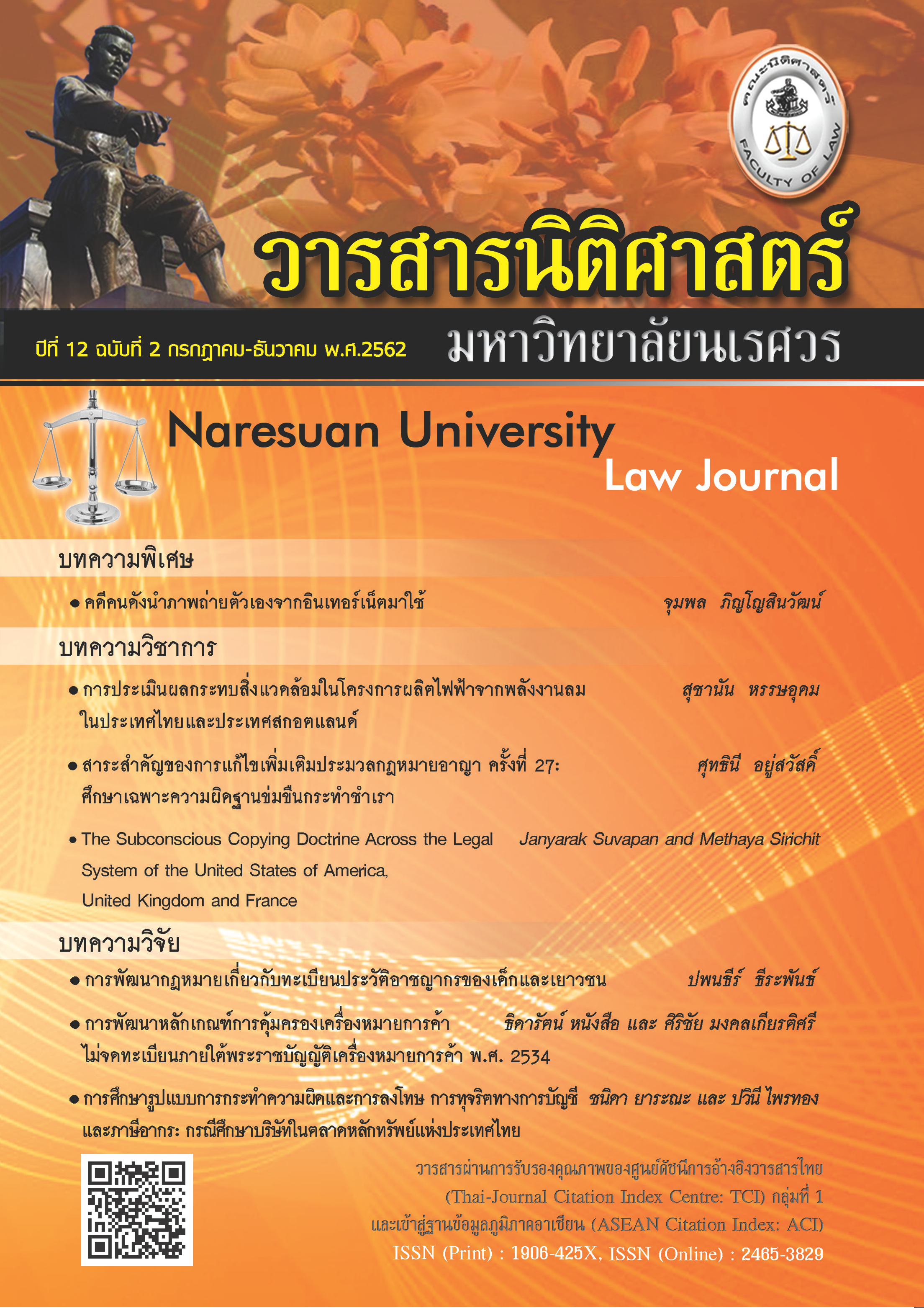Environmental Impact Assessment for Wind Farms in Thailand and Scotland
Main Article Content
Abstract
Wind farms are promoted in many countries because they hope that it could reduce the emission of greenhouse gases from energy sectors. Although the generation of energy from wind turbines are zero carbon emission, the operation of the projects might cause the effect on environment and people such as unbearable noise and toxic chemicals released from the operation. Therefore, the environmental assessment would be the essential tool that could reduce the negative effects from such projects. This study shows that in case of Thailand, under the Enhancement and Conservation of the National Environmental Quality Act, (B.E.2535) 1992, any operators of wind farms is not required to carry out the environmental impact assessment; however, the assessment may be required to satisfy conditions stipulated by other laws. On the other hand, the Scottish operators shall comply with a Scottish law concerning the environmental impact assessment before launching wind farm projects. Moreover, this study shows some interesting environmental assessment patterns in Scotland such as Strategic Environmental Assessment, Habitats Regulations Appraisal which might be the guidance to develop the legal measures and environmental assessment system in Thailand.
Article Details
References
Bell, Stuart, Donald W. McGillivray, Ole W. Pedersen, Pedersen, Emma Lees, and Elen. Stokes. Environmental Law. 9th ed. Oxford: Oxford University Press, 2017.
Energy Regulatory Commission, Department of Licensing. The Guidance for Energy Operation Licensing. Bangkok: Energy Regulatory Commission, n.d. [In Thai].
Environment and Forestry Directorate. A Basic Introduction to Strategic Environmental Assessment (SEA). Edinburgh: SEA Gateway Team, 2010.
Office of Natural Resources and Environmental Policy and Planning, Ministry of Natural Resources and Environment. Strategic Environmental Assessment. 2nd ed.Bangkok: Office of Environmental Impact Assessment, Office of Natural Resources and Environmental Policy and Planning, 2011. [In Thai].
Scottish Government. “Environmental Assessment.” Accessed May 12, 2019. https://www.gov.scot/policies/environmental-assessment/environmental-impactassessment-eia/.
Scottish Natural Heritage. “Habitats Regulations Appraisal,” Accessed May 26, 2019. https://www.nature.scot/professional-advice/planning-and-development/environmental-assessment/habitats-regulations-appraisal-hra.
SEA. “Gateway and Database.” Accessed May 29, 2019. https://www2.gov.scot/seag/PublicSearch.aspx.
Udomsak Sinthipong. Environmental Law. 3rd ed. Bangkok: Winyuchon, 2018.[In Thai].
Woolley, Olivia. “Ecological Governance for Offshore Wind Energy in United Kingdom Waters: Has an Effective Legal Framework Been Established for Preventing Ecologically Harmful Development?.” The International Journal of Marine and Coastal Law 30, no.4 (2015): 765-793.
Young, Michaela. “Building the Blue Economy: The Role of Marine Spatial Planning in Facilitating Offshore Renewable Energy Development.” The International Journal of Marine and Coastal Law 30, no. 1 (2015): 148-174.


